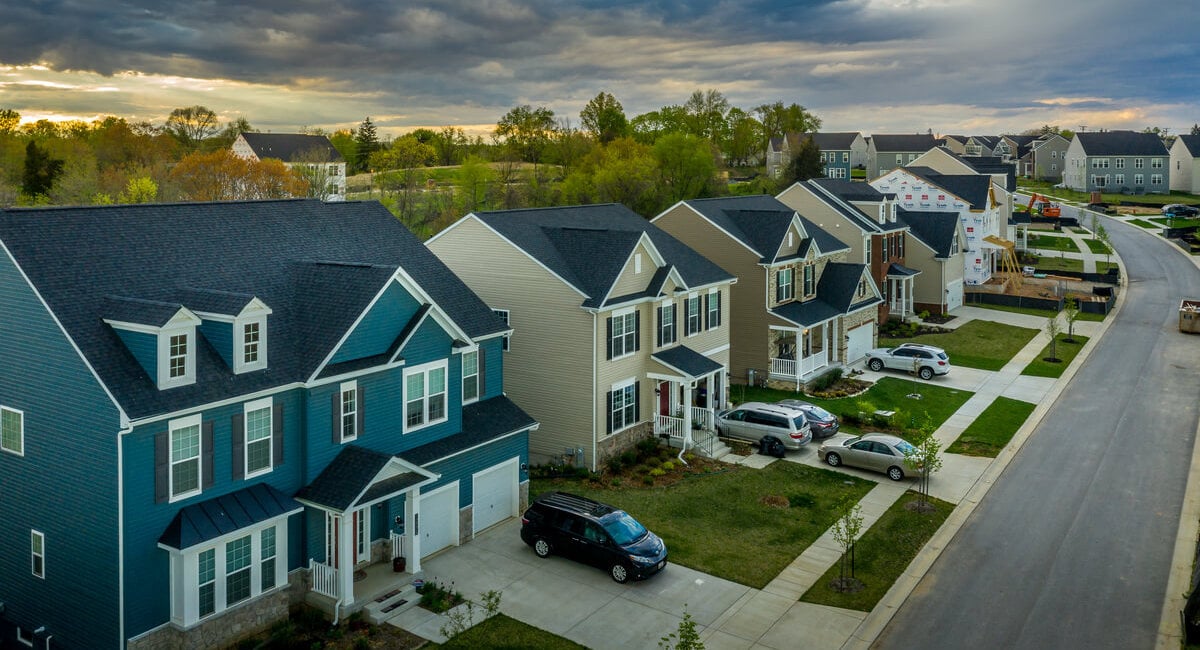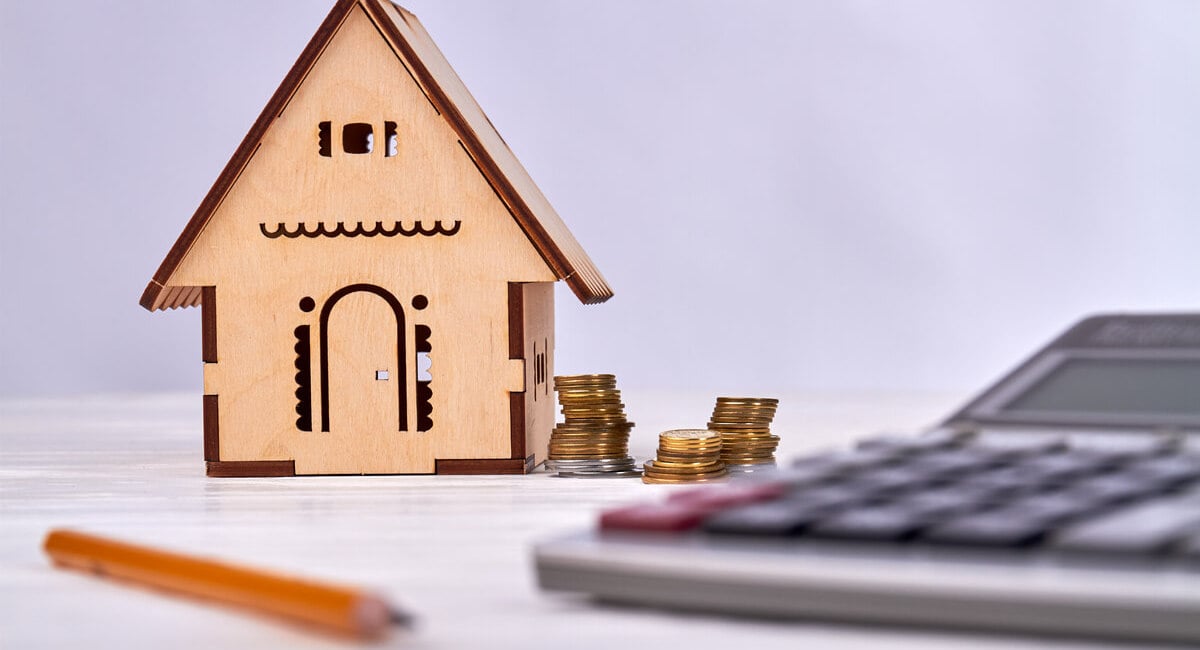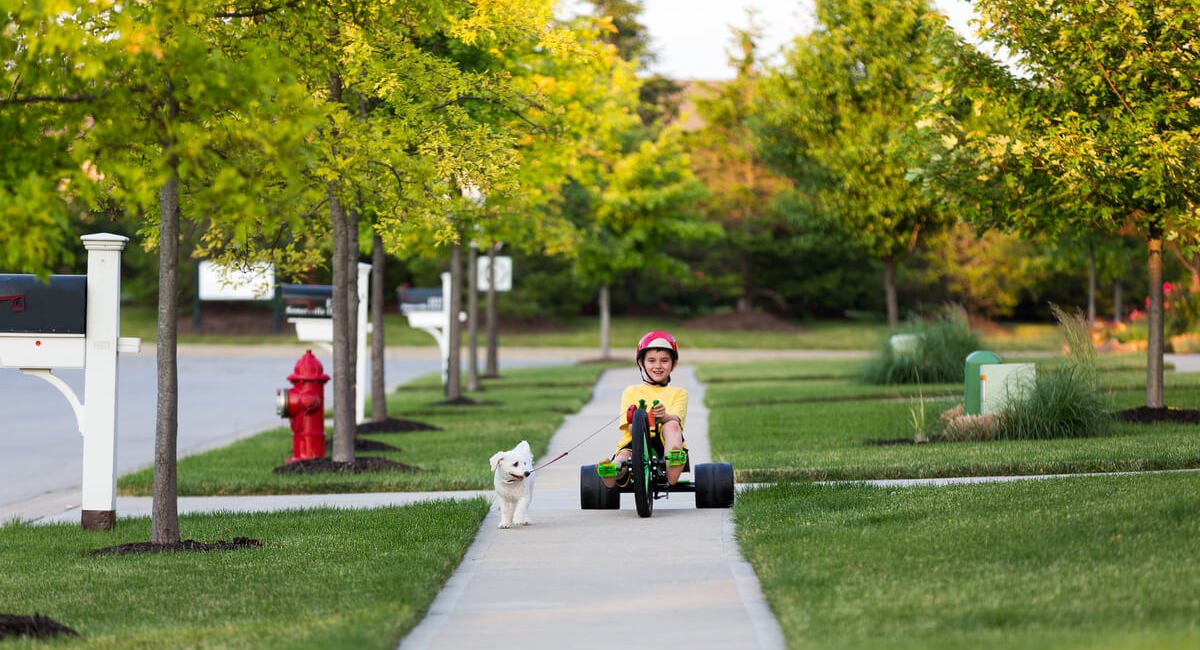Up-and-coming neighborhoods, also known as transitional neighborhoods, are communities that are expected to rise in popularity in the near future. As more and more people wish to move to the area, new businesses open and housing prices increase.
Buying a home in an up-and-coming neighborhood can be a good opportunity, but it has to be a strategic decision. You should know how to spot an up-and-coming neighborhood as well as what to expect when investing or living in one.

How to Identify an Up-and-Coming Neighborhood
Investing in a transitional neighborhood early is the key to success. If you’re interested in buying a home or rental property in an up-and-coming neighborhood, you should keep a close eye out for the signs that an area is undergoing revitalization.

Construction
Construction projects are one of the most obvious signs that a neighborhood is on the rise. Investors don’t build in areas that don’t have economic promise. Look for the construction of new homes, apartment buildings, and businesses. It’s common to see modern homes right next to older ones in up-and-coming neighborhoods.

Improvements to Infrastructure
Improvements to a neighborhood’s infrastructure are another sign that the area is being invested in. You might see expanding public transportation or new bike lanes in the neighborhood. New parks and green spaces often pop up in transitional neighborhoods, too.

Young People and Creatives
Up-and-coming neighborhoods are popular with young people, especially young creatives. These areas are less expensive to live in but have a growing number of amenities that are appealing to young artists. If you see a lot of young people move to an area, it’s probably a promising neighborhood to invest in. You can also look for new galleries and studios as well as coffee shops or bars that advertise live music.
Business Development
Certain types of businesses are particularly common in up-and-coming neighborhoods. You might see tech businesses, start-ups, and co-working spaces if the neighborhood is becoming popular with young professionals. Craft breweries, fitness studios, and salons all do well in transitional areas. If you’ve seen a few of these businesses open in the last year, the neighborhood is probably on the rise.

Market Data
You can use data from the real estate market to identify up-and-coming neighborhoods, too. Transitional neighborhoods aren’t as competitive or expensive as the trendiest areas, but you’ll notice that the market is starting to heat up. Homes will spend fewer days on the market and will begin to sell for higher prices. You might also see houses being flipped by investors.

Advantages of Buying Property in an Up-and-Coming Neighborhood
Whether you’re purchasing a home as your primary residence or looking for investment opportunities, there are many benefits to buying in an up-and-coming neighborhood. Here are a few of the most important advantages:
Less Expensive
Properties in neighborhoods that are just starting to rise in popularity will be far less expensive than homes in the most trendy and sought-after areas. Up-and-coming neighborhoods provide a great opportunity for first-time home buyers to enter the market, especially with today’s skyrocketing housing prices.
Less Competitive
Transitional neighborhoods haven’t hit peak popularity yet. Although they’re starting to attract attention from home buyers and investors, they’re not nearly as competitive as some other areas. This means you’ll have more options in your home search, and you may have more negotiating power when putting in offers.

Potential for Growth
If you get in at the right time, buying property in an up-and-coming neighborhood will provide an excellent return on investment. Efforts to revitalize the neighborhood will lead to better schools, more amenities, and less crime. All of these factors will increase your property’s value. If you purchase a rental property in an up-and-coming neighborhood, you can expect the average rent prices to go up as well.
Amenities
When a neighborhood is just starting to flourish, it may not have much to offer in terms of amenities or public resources. Over time, though, you’ll see new restaurants, bars, parks, and other attractions pop up. As more businesses and residents flock to the area, there will always be new things to explore and try out. This is also a great opportunity for you to be able to support local businesses as they find their footing in your neighborhood.
Diversity
Up-and-coming neighborhoods often attract people from a diverse mix of cultures and backgrounds. When you buy a home in a growing neighborhood, you can become part of a vibrant community. If you’re purchasing a rental property, the diversity and sense of community can be a selling point for prospective tenants. Young people especially desire to live in close-knit and diverse communities.

Disadvantages of Buying Property in an Up-and-Coming Neighborhood
While investing in an up-and-coming neighborhood has plenty of benefits, it does have some risks to keep in mind as well. Here are some disadvantages of buying a home in a transitional neighborhood:
Cost of Upgrades or Renovations
Homes in up-and-coming neighborhoods tend to be old and run-down. Although it’s entirely possible you’ll find the perfect house in a rising neighborhood, most people who invest in transitional areas have to put extra money into repairs and renovations. This could eat away at the money you saved by purchasing in a cheaper neighborhood.
Waiting for Change
By definition, up-and-coming neighborhoods are still on the rise. If you buy property early in the neighborhood’s transition, you’ll get a great return on your investment, but you’ll probably be waiting a while for change to happen. Newly transforming communities don’t have all the benefits and amenities of the hottest neighborhoods, and there might be concerns about safety or lack of resources.

Risk
There are telltale signs that can help you identify an up-and-coming neighborhood, but you can never predict the future with complete certainty. Buying a house with the expectation that the neighborhood will improve is a risky decision. Economic or political circumstances can always change, which has the potential to bring a neighborhood’s transition to a halt.
Controversy of Gentrification
Despite the benefits of revitalization in up-and-coming neighborhoods, gentrification is a controversial topic. When homeowners or investors buy properties in transitional neighborhoods, the resulting increase in housing prices can force out the long-time residents. If you buy a house or rental property in an up-and-coming neighborhood, you may face judgment or criticism from community members who have lived there for many years.
An up-and-coming neighborhood is an ideal place to purchase property if you’re a first-time home buyer or are looking for a lucrative long-term investment. However, buying a house with the hope that the neighborhood will improve can be risky and change doesn’t happen overnight. Before putting in an offer on a home in a transitional neighborhood, be sure to do your research and weigh the pros and cons to make sure it’s the right decision for you.


